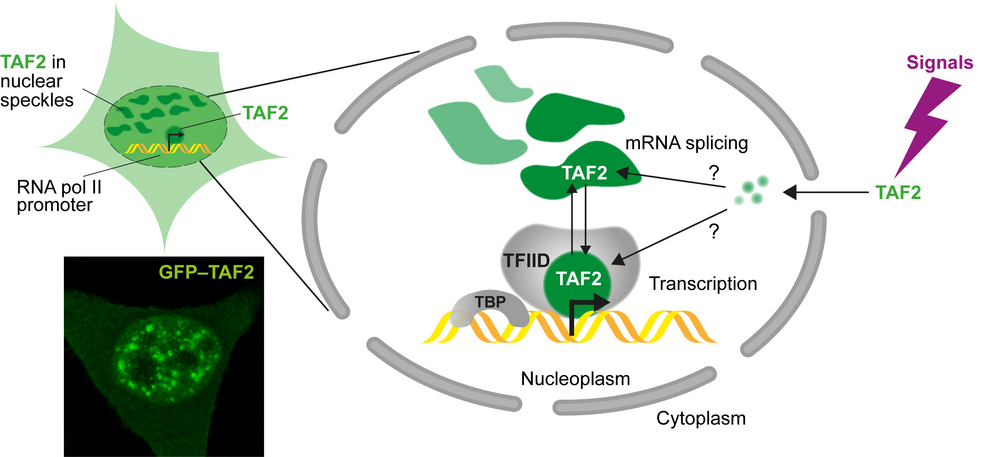These questions point to broader challenges in the field, such as investigating how regulatory mechanisms are organised in space and time, and how their disruption leads to disease. Genetic mutations in key regulatory processes often cause severe phenotypes during early embryonic development or neurodevelopmental stages. The reason why these basic mechanisms are especially important during neurodevelopment still remains unclear. Another major question is how different molecular processes – like transcription and splicing – are coordinated. We still know surprisingly little about the mechanisms of co-transcriptional splicing or the roles of many RNA-binding proteins involved. Visualising these events at the surface of nuclear speckles could offer valuable new insights.
What drives you personally to keep investigating how cells coordinate complex molecular processes — and where do you hope this knowledge could make a difference in the future?
Tanja Bhuiyan: I have always been curious, loved exploring the unknown and figuring out how nature and especially life works. As many children of immigrants in Germany, I grew up with a low socioeconomic status and I certainly did not picture myself as a scientist. I hardly knew anybody with a university degree and had no scientific role models. Nevertheless, I decided to study Biology. Science isn’t a solo effort, the people around us shape our path. I was lucky to have a great PhD mentor, Winship Herr, who inspired me and introduced me to the world of gene regulation. Complex molecular processes are the key to life and studying them satisfies my curiosity. You don’t need to feel predestined for a career in research. What matters is passion, creativity, and a unique point of view – and that’s why diversity enriches scientific discovery. Passion is essential, but so is a supportive environment. We need to keep up those efforts toward an even more inclusive academic environment, where researchers from all backgrounds can realise their full potential.
Creating such an environment is crucial, as it fosters the kind of diverse perspectives that are essential to tackling some of the biggest questions in biology. One of the questions that fascinates me most is how genes and environment interact. Genes determine less than we used to think. In complex organisms like humans, control is decentralised and distributed across many levels and agents.





